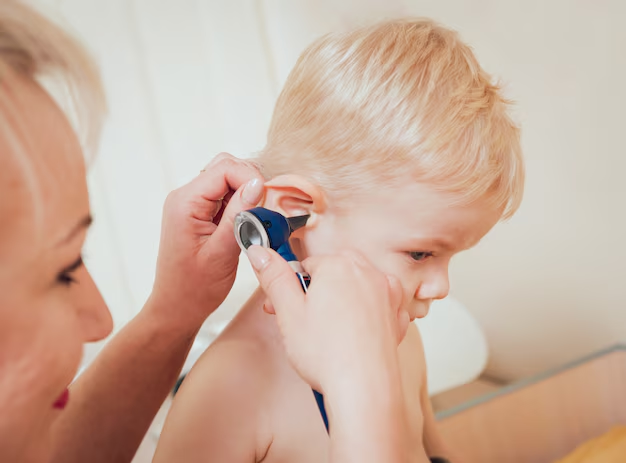Keeping Your Hearing Aid in Top Condition: A Comprehensive Guide to Cleaning
For those who rely on hearing aids, maintaining their functionality and cleanliness is essential to enjoying crystal-clear sound. But how does one achieve this without damaging these delicate devices? Learning to clean your hearing aid properly can significantly extend its lifespan and performance. This guide will walk you through everything you need to know to keep your hearing aid in pristine condition.
🧼 Understanding the Importance of Regular Cleaning
Hearing aids are exposed to various elements, including earwax, sweat, and environmental debris. Over time, these can accumulate and affect the device's performance. Regular cleaning not only ensures optimal function but also helps avoid costly repairs. By maintaining a consistent cleaning routine, you can prolong the life of your hearing aid and keep it working efficiently.
How Dirt and Debris Affect Performance
- Sound Quality: Blockages can lead to muffled or distorted sounds.
- Feedback Issues: Earwax buildup often causes annoying high-pitched squeals.
- Hygenic Concerns: Unchecked accumulation can lead to ear infections or skin irritation.
The Basics of Cleaning Your Hearing Aid
Before diving into cleaning techniques, it’s vital to identify your hearing aid model since different types require varying methods of care. The three main types include Behind-The-Ear (BTE), In-The-Ear (ITE), and Receiver-In-Canal (RIC) hearing aids.
General Cleaning Guidelines
- Preparation: Gather the necessary cleaning tools such as a soft cloth, a small brush, a wax pick, and a drying kit.
- Hands First: Always wash your hands thoroughly before handling your device to prevent transferring oils or dirt.
- Frequency: Clean your hearing aids every day to avoid accumulation of dirt and grime.
- Safe Environment: Work in a well-lit area over a soft surface to avoid damage in case the device is dropped.
Cleaning Techniques for Different Hearing Aids
Behind-The-Ear (BTE) Hearing Aids
BTE hearing aids have the microphone and battery compartment sitting behind the ear, with a tube connecting them to the ear mold.
Cleaning Steps for BTE
- Ear Mold: Detach and wash it with soapy water. Ensure it's completely dry before reattaching.
- Device Body: Use a dry cloth to wipe down the outer surface. Use a soft brush to clean the microphone opening.
- Tube: Use a small air blower to remove moisture or blockages.
In-The-Ear (ITE) Hearing Aids
ITE hearing aids fit completely within the outer ear and have components encased in a single unit.
Cleaning Steps for ITE
- Surface: Wipe with a dry, soft cloth. Avoid liquid cleaners that can damage electronic components.
- Wax Guard: Use a wax pick to remove any buildup around the wax guard.
- Vents and Openings: Use a small brush to gently clean these areas, preventing any blockages.
Receiver-In-Canal (RIC) Hearing Aids
These hearing aids have a receiver located within the ear canal and are similar in design to BTE devices.
Cleaning Steps for RIC
- Receiver Dome: Remove and clean with a damp cloth, allowing it to dry completely before reattaching.
- Microphone and Speaker: Use a soft brush to prevent blockage and ensure clear sound transmission.
- Delicate Components: Avoid water exposure by using a dry cloth for surface areas.
🙌 Special Tips for Hearing Aid Maintenance
- Keep Dry: Use a drying container overnight to absorb moisture and extend battery life.
- Battery Care: Remove batteries when not in use, storing them in a cool, dry place to prevent premature discharge.
- Professional Servicing: Schedule routine check-ups every 4-6 months with a hearing care professional to ensure your device is in optimal condition.
Troubleshooting Common Hearing Aid Problems
Even with meticulous care, you might encounter occasional issues with your hearing aid. Knowing how to handle them can save you time and stress.
Common Issues and Solutions
- No Sound: Check if the device is powered on and if the battery is charged. Ensure there is no debris blocking the ear mold or receiver.
- Weak Sound: Clean the microphone and speaker components. Inspect for wax buildup.
- Intermittent Functioning: Verify battery connection and look for moisture in the tubing.
😀 Quick Tips for Everyday Use
- Regular Inspection: Take a moment each week to check your hearing aid for any signs of damage or buildup.
- Daily Routine: Incorporate cleaning into your evening schedule when you remove your hearing aids.
- Storage: Always store your hearing aids in a protective case when not in use to avoid exposure to dust and humidity.
Summary: Keeping Your Hearing Aids Clean and Functional
To easily recall steps and tips for maintaining your hearing aids, here's a simple and visually appealing summary:
📝 Key Takeaways for Hearing Aid Care:
- 🧼 Clean Daily: Wipe surfaces, use a brush for openings, and check for wax buildup.
- 🔋 Battery Care: Remove nightly and store properly to extend life.
- 🌬️ Drying: Use a drying kit to remove moisture and prevent mold.
- 🔍 Frequent Checks: Regular inspections help catch early signs of issues.
- 👂 Expertise: Consult professionals periodically for in-depth maintenance.
By incorporating these practices into your routine, you can ensure your hearing aid continues to deliver outstanding sound quality, allowing you to engage fully with the world around you. Remember, the small effort of daily maintenance can lead to many years of reliable hearing assistive technology!

Related Topics
- a Plus Hearing Aid Centers
- a Real Pain Showtimes Near Centerville
- Are Airpods Bad For Your Ears
- Are Apple Second Generation Airpods Hearing Aids
- Are Audien Hearing Aids Just Amplifiers
- Are Costco Hearing Aids As Good As Others
- Are Costco Hearing Aids Good
- Are Hearing Aid Domes Interchangeable
- Are Hearing Aid Subscriptions Worth It
- Are Hearing Aid Tax Deductible